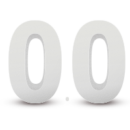This week’s market events:
Stay informed and prepared with the following updates

EUR HCOB Composite PMI(Aug):
The PMI monthly Composite Reports on Manufacturing and Services, released by S&P Global and Hamburg Commercial Bank (HCOB), are based on a large number of business executives in private sector manufacturing and services companies. Data is usually released on the third working day of each month. Each response is weighted according to the size of the company and its contribution to total manufacturing or services output accounted for by the sub-sector to which that company belongs. Replies from larger companies have a greater impact on the final index numbers than those from small companies.

USD S&P Global Services PMI(Aug):
The Services Purchasing Managers Index (PMI) released by S&P Global captures business conditions in the services sector. As the services sector dominates a large part of total GDP, the services PMI is an important indicator of the overall economic condition in US. A result above 50 signals is bullish for the USD, whereas a result below 50 is seen as bearish.

USD Gross Domestic Product Annualized (Q2):
The Gross Domestic Product Annualized released by the US Bureau of Economic Analysis shows the monetary value of all the goods, services and structures produced within a country in a given period of time. GDP Annualized is a gross measure of market activity because it indicates the pace at which a country’s economy is growing or decreasing. Generally speaking, a high reading or a better than expected number is seen as positive for the USD, while a low reading is negative.

NZD Retail Sales (QoQ)(Q2):
The retail Sales released by the Statistics New Zealand measures the total receipts of retail stores. Quarterly percent changes reflect the rate of changes of such sales. Changes in Retail Sales are widely followed as an indicator of consumer spending. A high reading is seen as positive (or bullish) for the NZD, while a low reading is seen as negative (or bearish).






